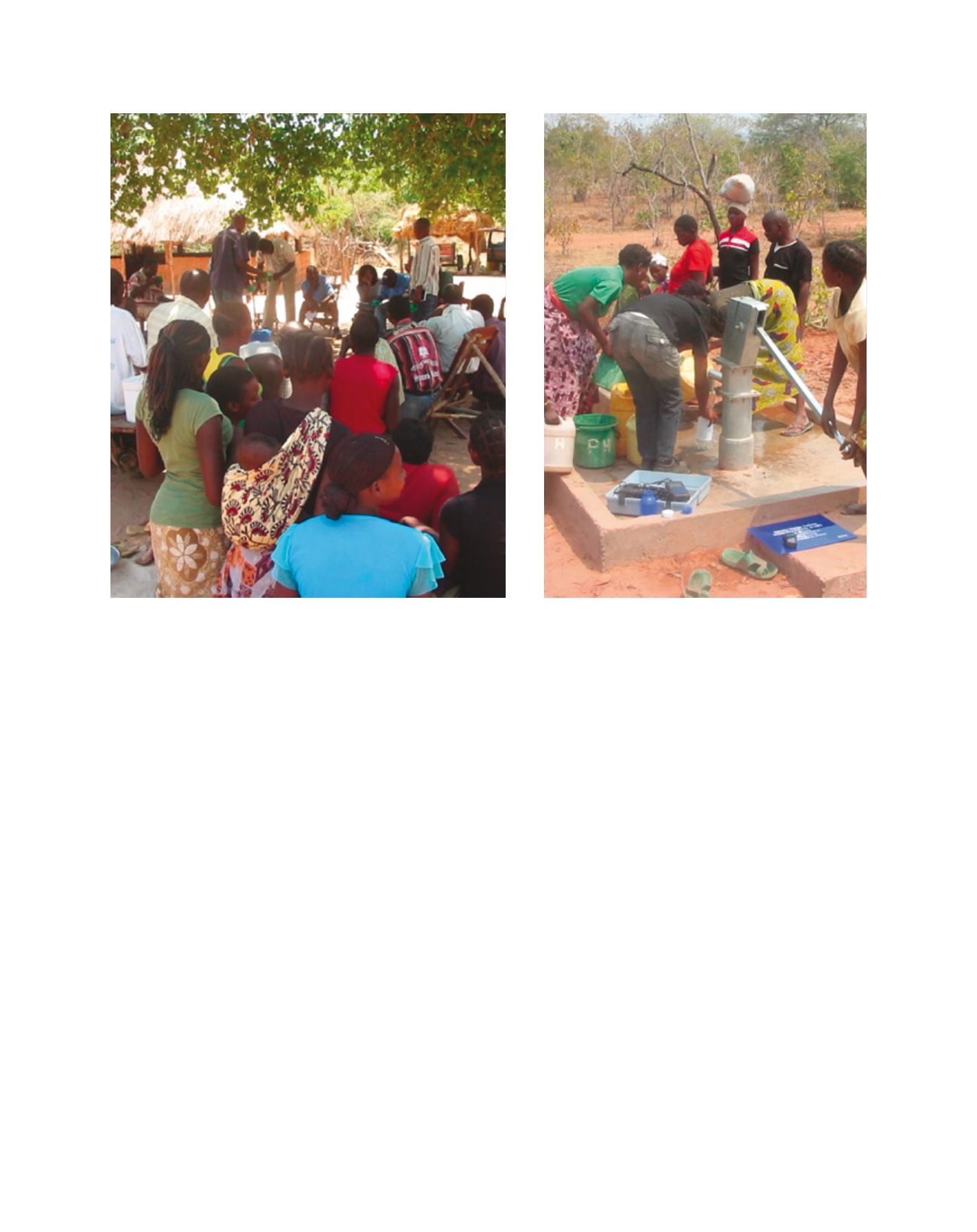

[
] 94
T
ransboundary
W
ater
M
anagement
as evidenced by the Water Supply and Sanitation Act of 1997; the
establishment of the National Water Supply and Sanitation Council
(NWASCO) as a regulator for service provision under the water supply
and sanitation subsector; the creation of commercial utilities (CUs)
owned by local authorities for improved water supply and sanitation
service provision in urban and peri-urban areas; the establishment
of the Devolution Trust Fund (a pro-poor fund currently supported
by cooperating partners to facilitate investment for improved water
supply and sanitation service provision in peri-urban areas by CUs);
and the provision of support for the sustainable operation and main-
tenance of rural water supply facilities by user communities. Water
sector reforms in Zambia have been guided by the following seven
sector principles adopted by GRZ in 1994:
• separation of water resources management
from water supply and sanitation
• separation of regulatory and executive functions
• devolution of authority to local authorities and
private enterprises
• full cost recovery in the long term
• human resources development leading to more effective
institutions
• technology appropriate to local conditions
• increased GRZ priority and budget spending to the sector.
More importantly, Zambia can now state that 61 per cent of the
rural population have access to improved safe water supply sources
and 48 per cent have access to adequate sanitation. The statistics for
urban areas are 78 per cent and 50 per cent respectively.
In order to address shortcomings and enhance
service provision in the water resources manage-
ment subsector, the 1994 National Water Policy
was revised in 2010. The revised policy now has
provisions for the management of water resources at
catchment level in the country to ensure efficiency,
and provisions for the development of a legal and
institutional framework for management of interna-
tional waters. It also recognizes that water is a scarce
and precious resource, and thereby outlines the
broad principles that govern the management of the
country’s water resources in a sustainable manner.
Most importantly, the policy reinforces integrated
water resources management as the guiding princi-
ple to optimally harness water resources for efficient
and sustainable utilization for enhanced economic
productivity and poverty reduction. The country is
now subdivided into six catchments: Zambezi, Kafue,
Luangwa, Chambeshi, Luapula and Tanganyika.
To complete the water sector reforms that started in
1994 with the water supply and sanitation subsector,
the Zambian parliament enacted the Water Resources
Management (WRM) Act, No. 21 of 2011 as a new
legal framework for the water resources management
subsector. Unlike the 1949 Water Act, the new legal
framework specifically includes the regulation of
groundwater and provides for the establishment of
institutions responsible for water resources manage-
Community dam management meeting in Gwembe District
A rural water supply borehole in Gwembe District
Image:
N.H. Mpamba
Image:
N.H. Mpamba


















